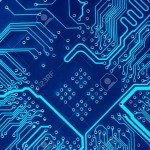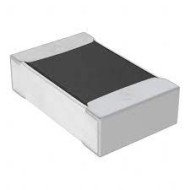
Radio Frequency Identification (RFID) is a technology in which a tiny chip of the size of sand grain is remotely powered by a reader, which then sends data back to the reader. Because this operation is passive, the cost of these chips are sub-dollars and very inexpensive.
Frequency Allocation. RFID have frequency allocation called LF (100-130KHz), HF (13.56MHz) and UHF(800MHz-950MHz) and Microwave (2.5GHz).
LF – or Low
Frequency RFID is suited for high obstacle area including metals. LF RFID
operates slowly but reliably. These are the oldest form of RFID and still being
used extensively in ID Cards, Access Controls, and other close range environment.
The range is limited to only 30cm. LF RFID may be read only or read write. Read
Only type have chips like TK4100 and EM4200. Read/write have chips NXP HITAG,
EM4305 or T5577. Special low frequency readers are used for Low Frequency use.
LF readers are very inexpensive.
HF or High
Frequency tags are used where the environment is less noisy. The transmission
speed is 13.56MHz, significantly higher than the LF range. HF RFID is used in
theft control applications. Library tags use these tags extensively. Theft
control tags, clothing tags, etc are other applications of HF RFID. ISO15963 is
the most popular kind of HF RFID tag. This tag is used in EAS system, Library
management (also called library tag) and retail. High Frequency readers/writers
are required to read the tags. HF reader/writer price is higher than LF, but
significantly less than UHF. HF based EAS system uses gate type readers for
detection, which have a range of 1 meter.
UHF, or Ultra High Frequency
RFID is fastest and longest range of RFID technology that exists today without
going to active RFID. UHF tags can be detected from up to 30m range from the
readers. Due to their speed of reading, a well designed reader may read 100s of
these tags at the same time. UHF tags are used in inventory management to
replace bar codes, automobile tracking, automobile access control, and many
other long range detection applications. UHF tags are the most attractive due
to their very low price, high speed, long range and reliability. In addition,
modern readers are capable of reading multiple tags simultaneously (100s of
tags together). This makes identification of inventory items very fast without
needing to scan the barcode. UHF tags are replacing barcodes. While barcodes
are not entirely gone, but most barcodes are printed on RFID stickers. UHF
reader/writers are expensive. The price range from $200 to several thousand
dollars. In addition, many unit is split into a reader part and antenna part.
Reader part have co-axial port for antennas and many antennas can be attached
to a single reader hardware. UHF antennas have directional polarization and a
full planning is needed to put the antenna for best reading range and
reliability. With high installation cost of UHF reader and antenna assembly, is
supplemented by the ultra low price of the UHF RFID tags.
Types of Tags. Tags comes in the form of inlays,
stickers, cards, wristband, plastic enclosures, etc. Inlays are the most basic
form of tags. Inlays are used in stickers, cards, wristbands and other types.
Inlays are wet and dry. Wet inlays have a sticky back. Dry inlays does not have
any glue. Stickers are used to print labels or barcode. Wristbands are used in
hospitals, ticketing, etc. where the band will be disposed off. PVC Cards are
used as ID Cards and access controls.
Tags can have not writable memory (just
read only with a unique number). Read Only tags are cheaper, but tags with
memory are getting to the same price range. Most of the tags today have some
small memory for reading and writing. The memory is used by the application
software for various categorizing purposes.
Active RFID
Active RFID
stands for RFID with some external power into to the tags to increase the
range. The tag contain a tiny battery to increasing the range to about 100m.
Most Active RFID have a range of over 30m. 2.5GHz Active RFID are very low
power tags and the batteries last over 3 years. Active RFID tags are expensive
starting from $3 per tag. They come in various forms inside plastic enclosures.
PVC Card, wristbands, disc, keyring, etc are popular Active RFID types. Active
RFID readers are small with omni-directional antenna.
Chip
Properties
|
|
Frequency |
Properties |
|||||||
|
Speed |
Range |
Has
Memory |
Price |
Standard |
Usage |
Chips |
Mfg |
||
|
1 |
Low Frequency (LF) |
Low |
<30cm |
Some |
Low |
ISO |
Access
Control, ID
Cards |
TK4100 EM4200 HITAG EM4305 T5577 |
NXP |
|
2 |
High Frequency (HF) |
Medium |
<1m |
Most |
Low |
ISO5963 |
Library,
EAS, Retail |
NXP |
NXP |
|
3 |
Ultra High Frequency (UHF) |
Fast |
<12m |
All |
Very
Low |
ISO18000 GEN2 |
Retail,
Inventory, EAS, Library, Access Control, Automobiles, Medical, Patients, etc. |
Higgs Monza |
Alien Impinj |
|
4 |
Microwave Active RFID |
Very
Fast |
<100m |
Optional |
High |
None |
Non
Standard |
N/A |
N/A |
Applications
and Tag Use
|
|
Applications |
Frequencies |
|||
|
LF |
HF |
UHF |
Active |
||
|
1 |
Garments |
|
|
✔ |
|
|
2 |
Hospital |
|
✔ |
✔ |
|
|
3 |
Animal
and Poultry |
|
|
✔ |
|
|
4 |
Shipping
Containers |
|
|
|
✔ |
|
5 |
Automobile |
|
|
✔ |
✔ |
|
6 |
Access
Control |
✔ |
✔ |
✔ |
|
|
7 |
ID
Cards and Attendance |
✔ |
✔ |
✔ |
✔ |
|
8 |
Retail |
|
✔ |
✔ |
|
|
9 |
EAS
Security |
|
✔ |
✔ |
|
|
10 |
Library |
|
✔ |
✔ |
|
|
11 |
Inventory |
|
✔ |
✔ |
|
|
12 |
Long
Range Applications |
|
|
✔ |
✔ |




-751x500-250x250w.jpg)


-150x150h.jpg)



-150x150w.png)




-751x500-190x190w.jpg)

2
1
1
1
1